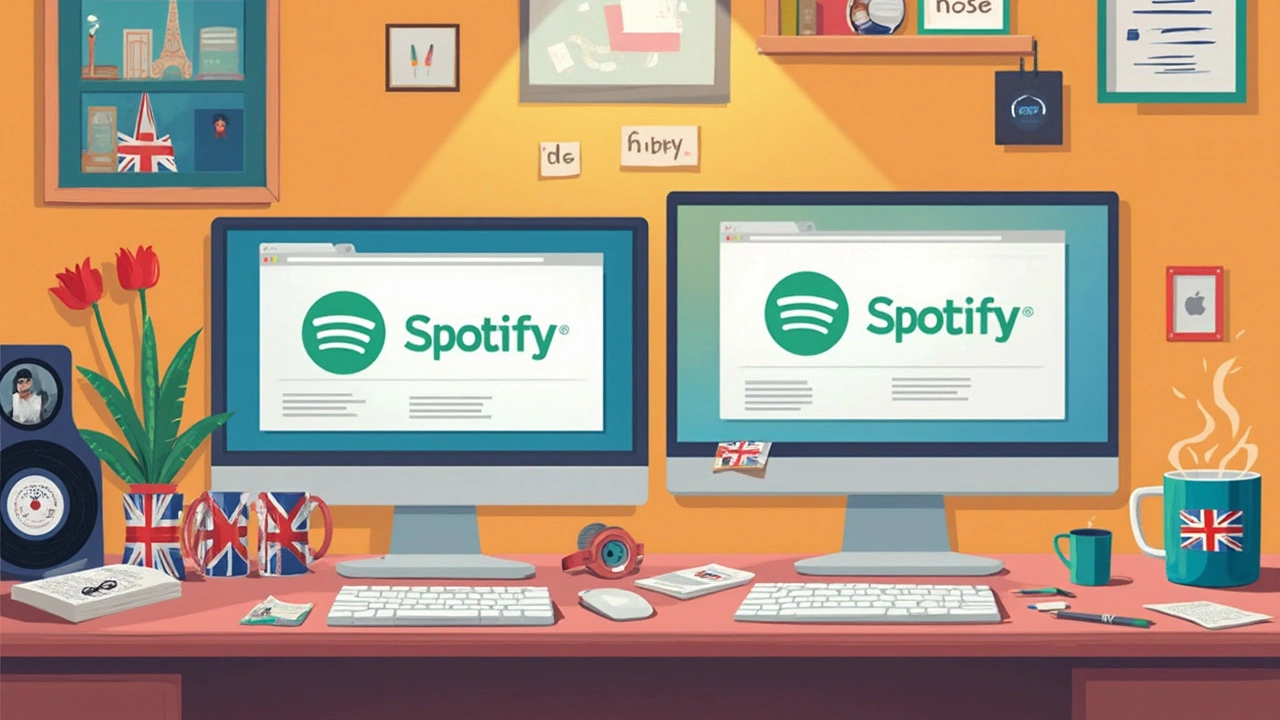If you’ve ever scrolled through endless playlists trying to find your next favorite song, you’ve probably run into the big question: is Spotify or Apple Music better? Picking the right music app can totally change how you experience your tunes—plus, no one wants to waste money on a subscription that doesn’t fit their vibe.
Both Spotify and Apple Music serve up millions of tracks, but the way they deliver music feels pretty different. Some folks love Spotify’s curated playlists and social sharing tools. Others swear by Apple Music’s deep integration with iPhones and high-res sound. And, yes, there are subtle differences that can make one platform way more convenient for you, depending on your habits.
Confused by all the options? Don't worry. Let’s break down how each app actually performs, what features set them apart, and which one gets you more for your monthly fee. You might be surprised by a few things under the hood; that’s where the real differences come out.
- User Experience & Interface
- Music Discovery & Playlists
- Audio Quality & Features
- Pricing, Perks & Ecosystem
User Experience & Interface
This is where things get personal—some people swear by one app just because it feels easier to use. When it comes to Spotify, you’ll notice right away it leans into a dark theme with bright green highlights. Navigation is seriously simple: at the bottom, you get Home, Search, and Your Library. Everything you need is max three taps away, even on Android or iOS. Spotify’s animations and layout are fluid, so it rarely feels laggy or overwhelming even when you’re jumping between playlists and podcasts.
Apple Music keeps things clean and leans hard into the Apple style. The white backgrounds and red accents match the rest of the iPhone vibe, so it just feels at home for anyone deep into the Apple ecosystem. Tabs on the bottom get you to Listen Now, Browse, Radio, Library, and Search—easy, but a little busier than Spotify. One cool Apple-only trick: if you’re listening on multiple devices (think iPhone, MacBook, iPad), handoff is buttery smooth. Your music moves instantly from one to the other—which is a game-changer if you live with Apple gear.
Both have useful features like easy access to downloads for offline listening, and both support lyrics in-app (no more Googling lyrics mid-song). But one standout for Spotify is its easy social sharing. See what your friends are playing in real time (if you want), follow each other's playlists, or broadcast your current jam on Instagram with one tap. Apple Music does have social elements, like sharing playlists and letting friends see what you’ve recently played, but these features are more hidden in menus and not as fresh-feeling.
Here’s a quick side-by-side to get your bearings:
| Spotify | Apple Music | |
|---|---|---|
| Interface | Dark theme, minimalist | Clean white, iOS style |
| Main Tabs | Home, Search, Library | Listen Now, Browse, Radio, Library, Search |
| Device Sync | Works on most platforms | Best with Apple devices |
| Social Features | Playlists, friend feed, sharing | Playlists, some sharing (less visible) |
If you love customizing your music journey and want a clear, simple interface that’s not limited to Apple, Spotify usually wins out. If you’re already wrapped up in Apple’s universe and want seamless transitions between all your devices, Apple Music just feels built for you.

Music Discovery & Playlists
If you’re looking to stumble on new tunes, the way Spotify and Apple Music handle music discovery is actually pretty different. Spotify is kind of famous for its personalized playlists like Discover Weekly and Release Radar. Every Monday, Discover Weekly drops a fresh mix based on your recent listens, pulling in artists you’ve never heard before right alongside old favorites. You can also check out Daily Mixes that blend stuff you already love with similar tracks. These features update automatically and get smarter the more you use the app.
Apple Music takes a more old-school approach—it focuses harder on expert-curated playlists and genre stations. Sure, there’s the "For You" section that tries to guess what you’ll enjoy, but the main vibe is playlists built by artists, editors, and pros who know the scene. If you’re into albums curated by musicians themselves, Apple Music is a solid pick. They also have Apple Music 1, a global radio station with live DJ sets, exclusive interviews, and new releases.
When it comes to finding new music, both apps nail the basics like search, browsing new releases, and artist radio. But the magic happens in the recommended playlists. Here’s a quick side-by-side look at two of their big features:
| Feature | Spotify | Apple Music |
|---|---|---|
| Personalized Playlists | Discover Weekly, Release Radar, Daily Mixes | For You Mix, Chill Mix, Favorites Mix |
| Curated Playlists | Editorial and mood-based playlists | Artist, expert, and editor-curated playlists |
| Radio Stations | Artist/genre radio, personalized radio | Apple Music 1, genre, and artist stations |
Social options can also tip the balance. On Spotify, you can follow friends, peek at what they’re playing, and swap playlists instantly—great if you love sharing music in real-time. Apple Music lets you share, but it’s not as hands-on or instant. Spotify’s collaborative playlists let friends add tracks together, which is perfect for road trips or party planning.
Tip: If you care most about surprises and new finds, Spotify tends to surface hidden gems thanks to its super-smart algorithm. If you want expert picks and carefully-crafted vibes, Apple Music is more your style. And hey, you’re not locked in—try both for a month, and see whose playlists actually get your toes tapping.

Pricing, Perks & Ecosystem
Let’s get real: most people pick a music streaming app based on price and the little extras. Both Spotify and Apple Music offer the basics—a monthly subscription unlocks the full library, offline listening, and zero ads—but the details definitely matter.
Here’s a quick side-by-side comparison of current subscription pricing (as of May 2025):
| Plan | Spotify | Apple Music |
|---|---|---|
| Individual | $10.99/mo | $10.99/mo |
| Student | $5.99/mo | $5.99/mo |
| Family (up to 6) | $16.99/mo | $16.99/mo |
| Free Tier | Yes (with ads) | No |
Spotify hooks a lot of users with its free, ad-supported tier. If you’re not ready to pay, you can still use most features, though you’ll hear ads and lose things like unlimited skips. Apple Music doesn’t offer a free version beyond a short trial—after that, it’s pay-to-play. If you want something totally free, Spotify wins by default.
Bump up to a paid plan, and both offer family and student discounts, so you don’t have to break the bank. Spotify and Apple Music give students a half-off deal (they’ll need to verify with a .edu email), and families can add up to six users under one account, so sharing makes sense.
Now for perks. Spotify’s biggest flex is its social sharing. You can send playlists to friends, see what your friends are listening to in real time, and even use cool things like Blend playlists (which mixes your favorite songs with a friend’s in one playlist). Spotify also drops its famous “Spotify Wrapped” every December, letting you share your most-played music for an instant identity boost on social media.
Apple Music goes hard with integration if you use Apple products. You can trigger songs with Siri, download playlists straight to your Apple Watch, and even sync your entire iTunes catalog right in the app. Apple Music also gives you access to Lossless Audio and Spatial Audio with Dolby Atmos, as long as you’re on Apple gear or supported headphones. If you’re all-in on the Apple ecosystem, the seamless vibe actually saves time and clicks.
Both services work on Android, Windows, Mac, and web—even though Apple Music used to be iPhone-focused, it’s opened up a lot. That said, Spotify just feels nimbler if you’re bouncing between different devices or using smart speakers that aren’t from Apple.
One tip: If you already pay for Apple One (Apple's bundle for things like iCloud, TV+, and Arcade), Apple Music gets bundled in for cheaper than separate subscriptions. It’s a sneaky way to save if you’re tied into Apple’s other stuff anyway.

